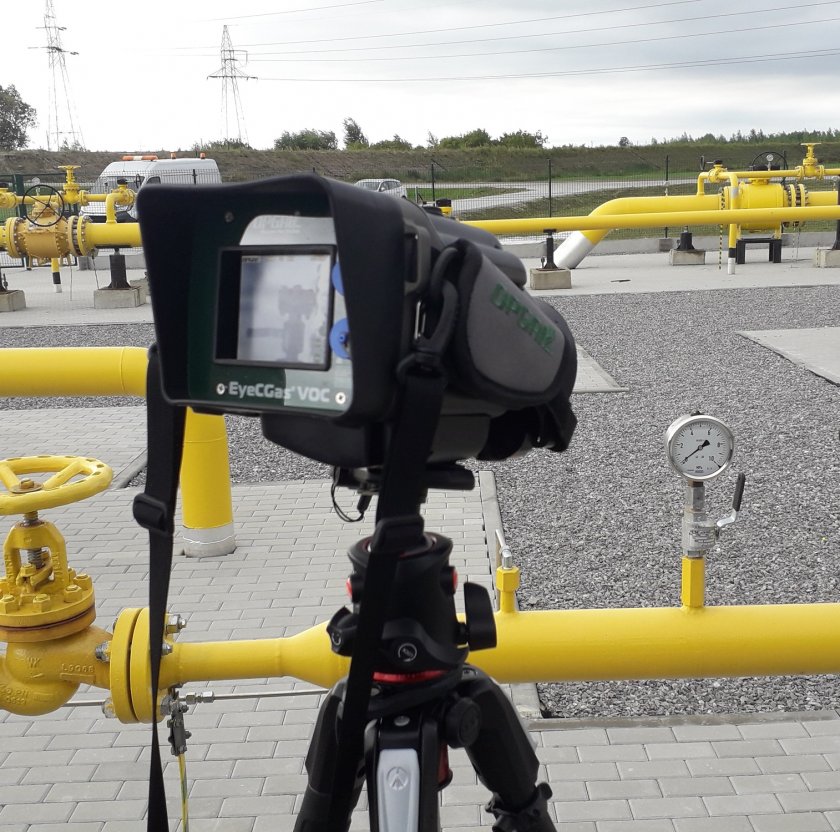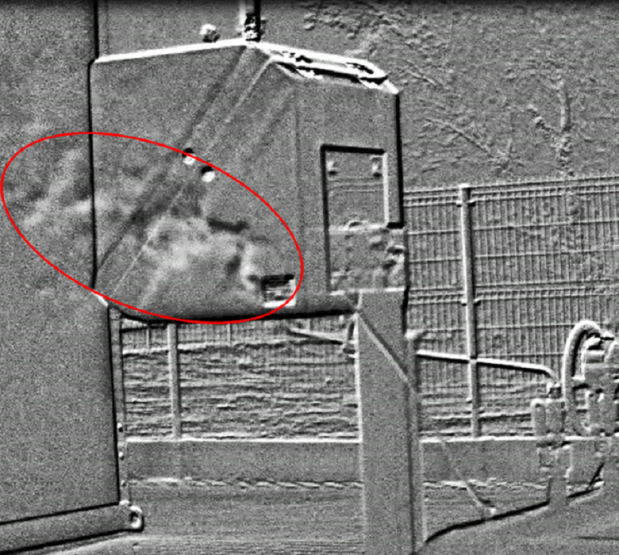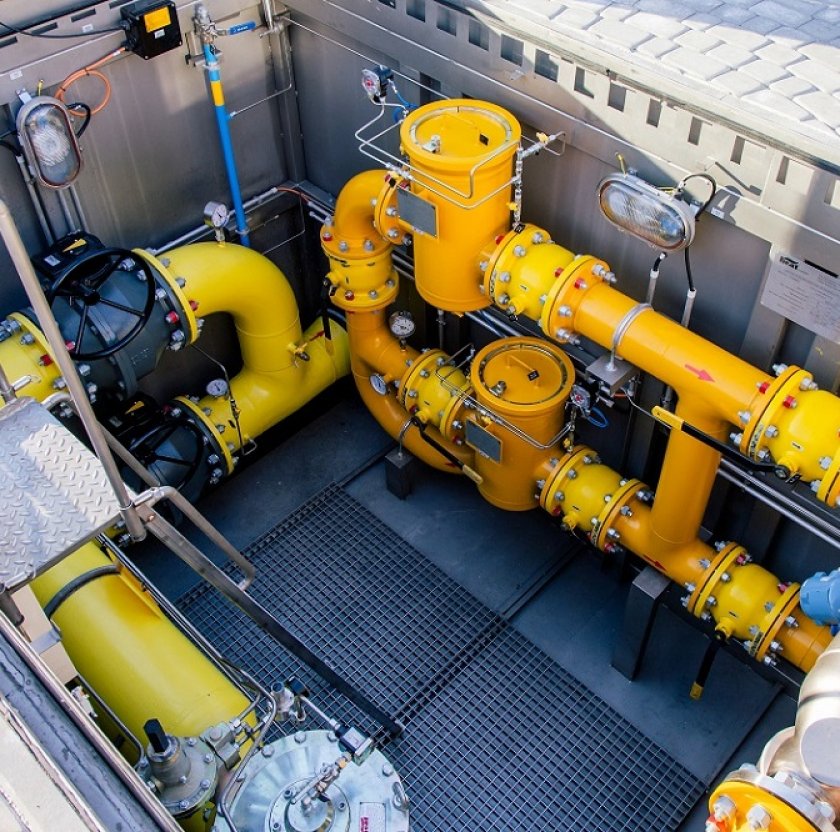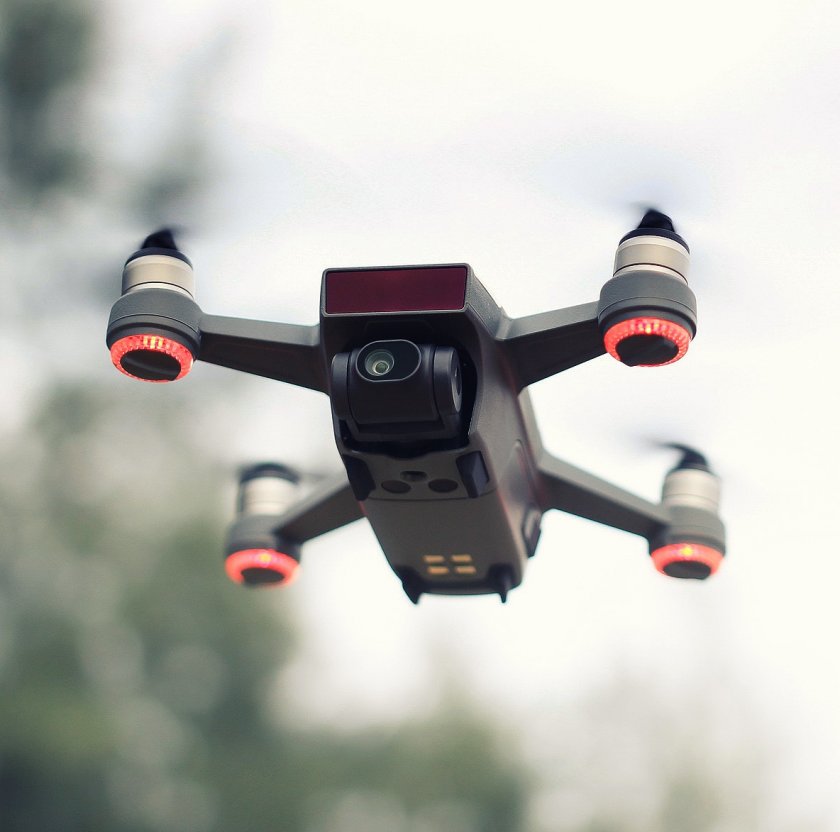Detection of natural gas using thermal imaging cameras
 Fot.
Fot.
The intensity of this radiation is proportional to the temperature of the object, with the emitted wavelength also decreasing with increasing temperature. It must be noted that every object, apart from its own emission, also reflects radiation from its surroundings, which means that the emissivity /reflection factor must be known or calculated in order to measure the temperature correctly.
Thermal imaging cameras use an infrared detector, depending on the design, operating at ambient temperature or requiring cooling to a level of about 60 K (approx. -213°C) - which is often achieved using a miniature Stirling engine and lenses made of suitable metals (e.g. germanium): glass is unsuitable because it reflects radiation.
Modern cameras are highly sensitive devices with practical recognition of temperature gradients at 0.1°C and measurement accuracy of 1.0°C. The range of detected radiation in standard cameras is about 8–14 micrometers (the so-called long-wave infrared detectors), and image resolution in high-end commercial devices reaches 1024 x 768 pixels.
Modern cameras are highly sensitive devices with practical recognition of temperature gradients at 0.1°C and measurement accuracy of 1.0°C. The range of detected radiation in standard cameras is about 8–14 micrometers (the so-called long-wave infrared detectors), and image resolution in high-end commercial devices reaches 1024 x 768 pixels.

Gas cloud as seen by thermal imaging camera
Gases are good conductors of infrared radiation and as such are not visible to a standard thermal imaging camera (just as air is to the eye); however, they absorb a small portion of this radiation of a precisely defined wavelength corresponding to the resonant frequency of gas molecules.
Thanks to the use of medium-wave infrared detectors (detection bandwidth of approx. 3–5 micrometres) and narrowband infrared filters (wavelength 3.2–3.4 micrometres), corresponding to the absorption band for hydrocarbon gases, a suitably adapted thermal imaging camera can capture images of these gases, including methane. Cameras of this type are offered by several manufacturers, including for drone use.
Thanks to the use of medium-wave infrared detectors (detection bandwidth of approx. 3–5 micrometres) and narrowband infrared filters (wavelength 3.2–3.4 micrometres), corresponding to the absorption band for hydrocarbon gases, a suitably adapted thermal imaging camera can capture images of these gases, including methane. Cameras of this type are offered by several manufacturers, including for drone use.
Gas is visible as a translucent cloud refracting the image (similar to smoke or heat haze over hot tarmac). For better imaging, these cameras also have an internal algorithm that compares subsequent frames of the image (differential mode - increased sensitivity), which highlights the movement of the gas cloud in the image and makes it easier to identify.
Practical use of gas detection cameras requires an experienced operator who can identify gas clouds on the camera image (not always clearly visible, especially in the case of small leaks) and good stabilisation of the device (a steady hand of the operator is required; it is advisable to use a tripod, and in the case of drone applications - a high-end gimbal).
Practical use of gas detection cameras requires an experienced operator who can identify gas clouds on the camera image (not always clearly visible, especially in the case of small leaks) and good stabilisation of the device (a steady hand of the operator is required; it is advisable to use a tripod, and in the case of drone applications - a high-end gimbal).



